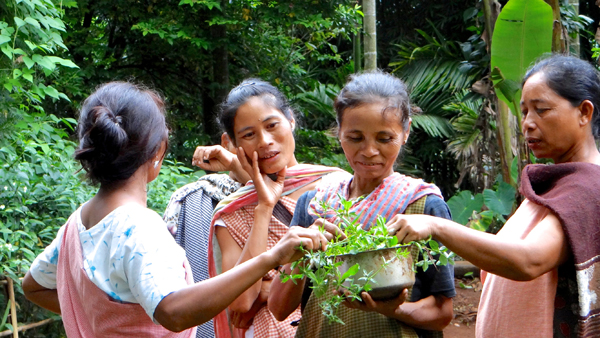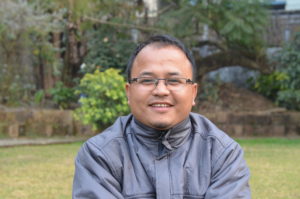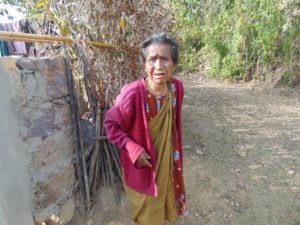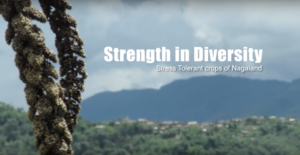As Meghalaya seems to be once again heading towards the well travelled road of confrontation and bandhs, I would like to draw the attention of the readers to some of the creative solutions that some nations and communities have found in the face of daunting, chaotic and even frightening circumstances. It is also important for a small society like ours to be reminded that several societies (e.g. Norse of Iron Age Greenland and the indigenous peoples of deforested Easter Island) collapsed because they failed to comprehend the complex transformation processes of their societies. Unfortunately, the unintended consequences of their well- intentioned initiatives actually wiped them out.
 For indigenous communities, story-telling is part of our tradition. Interestingly, modern day management also uses stories to develop scenarios about how the future might unfold for our organizations, our communities and our world. Such stories are about how the external forces of politics, religion, a devastated environment, technology, social and cultural dynamics and economics could interact and thereby produce different challenges and opportunities.
For indigenous communities, story-telling is part of our tradition. Interestingly, modern day management also uses stories to develop scenarios about how the future might unfold for our organizations, our communities and our world. Such stories are about how the external forces of politics, religion, a devastated environment, technology, social and cultural dynamics and economics could interact and thereby produce different challenges and opportunities.
One the most well known examples of planning through stories (scenario planning) were called the Mont Fleur scenarios. They were developed in South Africa in 1991 by a group of concerned South Africans – politicians, business community members, activists and academicians – representing the country’s full ideological spectrum. They held a series of three-day storytelling workshops and discussions at the Mont Fleur conference hall outside Cape Town. These workshops developed 4 different scenarios about what might happen in their country between 1992-2002 when tackling touchy issues like reconciliation versus revenge and redistribution of lands versus the guarantee of minority rights to whites.
The Mont Fleur group disseminated the 4 scenarios through a large number of local gatherings and formal forums. Many of these meetings were held spontaneously to discuss the 4 scenarios. They refreshingly initiated a nationwide discussion about the possibilities for post-Apartheid South Africa at a time when the political negotiations between the African National Congress (ANC) and the apartheid-era National Party were taking place. These meetings therefore helped both parties and their supporters to think through the implications of their decisions. For example, one of the 4 scenarios was called Ostrich. It postulated a scenario in which a negotiated settlement to the crisis in South Africa could not be achieved and the country continued with a non representative government. Rumour has it that the then white President of South Africa, De Klerk was moved by the dangers highlighted by this scenario. Many believed that the public dialogues initiated by these 4 scenarios played a silent but significant role in paving the way for majority rule in South Africa.
At a time when South African communities were haunted by apocalyptic visions, the alternative scenarios helped them to rationally think through their options. More importantly, the 4 scenarios also helped them to move from looking at solutions to exploring different possibilities of the future they want for themselves and their children.
Scenario thinking is not about predicting the most likely future. It is about developing a range of possibilities, good and bad, expected and unexpected. It is about stretching our thinking about the emerging changes and their impending opportunities and threats. It is about weighing our choices more carefully when making short-term and long-term strategic decisions.
I am currently associated with initiatives in South Asia and the Andes that work with farmers and other citizens to shape decisions on the type of agricultural research needed for more sustainable and agro-ecological solutions to food security. One of the methods used for deliberation and inclusion is the establishment of Citizens’ Juries to facilitate the participatory design of alternative, farmer and citizen-led agricultural research. Perhaps, we in Meghalaya should start thinking of following the example of South Africa and of setting up Citizens’ Juries over this real and frightening issue of influx. They will certainly help us to realize that in discussing a fundamentally unpredictable future, there is no one truth.
In October 2015, there will be an international gathering of about 70 to 80 indigenous  communities from around the world. This gathering will take place in Mawphlang, next to the Sacred Grove. We intend to approach the President or Vice President of India to grace the opening of this gathering. We will also have the participation of almost all the important indigenous leaders of the world, well known environmentalists, grassroots workers and representatives of some international development agencies. The theme to the Conference is likely to be: The Future We Want: Indigenous Aspirations and Perspectives. It will be dealing with several topics of importance to indigenous communities and their food security including the topic of developing the indigenous concepts of well being, peace-making and culturally sustainable development. This could be a unique opportunity to showcase our collective indigenous genius of being able to make logical, constructive, inclusive and holistic choices for the well being and happiness of all.
communities from around the world. This gathering will take place in Mawphlang, next to the Sacred Grove. We intend to approach the President or Vice President of India to grace the opening of this gathering. We will also have the participation of almost all the important indigenous leaders of the world, well known environmentalists, grassroots workers and representatives of some international development agencies. The theme to the Conference is likely to be: The Future We Want: Indigenous Aspirations and Perspectives. It will be dealing with several topics of importance to indigenous communities and their food security including the topic of developing the indigenous concepts of well being, peace-making and culturally sustainable development. This could be a unique opportunity to showcase our collective indigenous genius of being able to make logical, constructive, inclusive and holistic choices for the well being and happiness of all.
The future is not predetermined and cannot be predicted. The choices we make can however influence what will happen to our communities and to our future generations.
In a situation where people feel swept along by overwhelming currents, it is important and critical to empower the silent majority to make informed choices and thereby become bridge builders for the well being of all.
Written by Phrang Roy, Chairman, North East Slow Food and Agrobiodiversity Society (NESFAS), Shillong, Coordinator, The Indigenous Partnership, Rome & Former Assistant President, IFAD, Rome.
The Shillong Times



